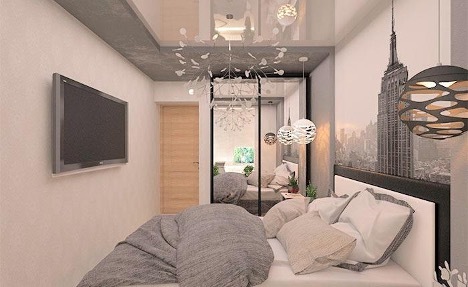When choosing a projector, you should carefully consider several parameters. For the image to be really high-quality, the device must create a light flux of sufficient brightness. Equally important is the contrast of the projector and its resolution. Each of these characteristics is discussed in detail in the presented material.
The content of the article
- Contrast
- Brightness
- Optical resolution
Contrast
The brightness of the projector and the overall image quality is largely related to the contrast ratio. It can be defined as the brightness of light that bounces off a pure white screen to the brightness that bounces off a pure black one. Simply put, the contrast of a projector is how many times white beams will be brighter than black ones.
If the model description states that the contrast ratio is 2000:1, this means that the white pattern is 2000 times brighter than the black pattern. The larger this indicator, the easier it is to distinguish the details of the image. This is especially important for elements such as:
- text;
- formulas;
- Images;
- schedule.
Speaking specifically about what is the best projector contrast ratio, it is best to choose devices with a ratio of 1000: 1 or more. Moreover, it is not necessary to strive for very high values, for example, 5000-10000: 1.

In fact, even the highest contrast is reduced by the lighting in the room. If you turn off the top light source, the image will be of high quality, even if the light output of the projector corresponds to a contrast ratio of 1000:1.
Brightness
No less important role is played by such a characteristic as the color brightness of the projector. It can be defined as the amount of color in an image or the intensity of lighting. It is this indicator that affects the perception of different colors by the eyes. So, the higher the brightness, the lighter the picture will be, and the lower, the darker. In order for the image to be really high quality, the brightness level, as well as the contrast ratio of the projector, must be balanced.
The brightness parameter is measured in lumens (denoted lm, ANSI Lumen or ANSI Lm). Select a projector according to this criterion, taking into account the diagonal and type of screen:
- For a white matte canvas with a diagonal of 3.5 m, 200-500 lm is enough.
- In small rooms, devices with 400-600 lm can be used.
- If you need to watch movies in high quality in a darkened room, you should select devices with 700-800 lumens.
- If viewing is planned to be carried out in daylight, models with an indicator of 900-1500 lm are selected.
- Brightness from 1200 lm provides high quality for watching movies in a home theater.
- If the room is large (classroom), you should select models with 2500 lm.
- Finally, for very large screens, projectors with a characteristic from 3000 to 12000 lumens are suitable.

Optical resolution
Finally, the image quality is also affected by such an important parameter as the optical resolution of the projector. It is defined as the number of pixels (dots) that create images. Obviously, the higher the score, the better. There are 3 main options:
- 1280*720 pix. - the most popular ratio that provides high-quality video display in 720p format.
- 1280*768 pix. best suited for 16:9 video.
- 1920*1080 pix. – maximum resolution, 1080p format. Provides high quality video with excellent color reproduction and crisp images.
Also, when choosing a projector, the types of connectors, lamp indicators, manufacturer's brand, price-quality ratio are taken into account. It is recommended to study customer reviews on different portals and compare average ratings. Thanks to this, you can get a really high-quality model at a reasonable cost.


